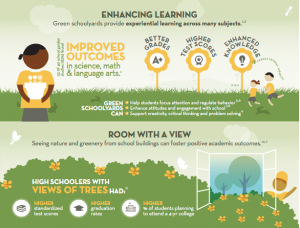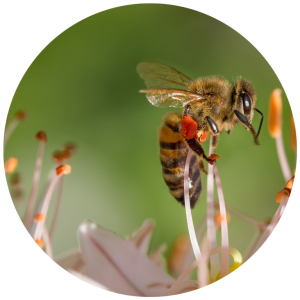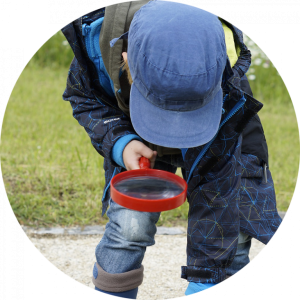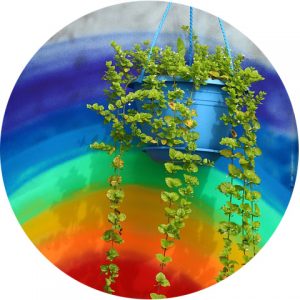 This collection of free toolkits, reports, infographics and advocacy tools is designed to help you or your organization/institution connect children, families and communities to nature. These beautiful resources lay out the many reasons that green schoolyards benefit our youth and our communities, including academic, mental health, and physical activity benefits. View Resource »
This collection of free toolkits, reports, infographics and advocacy tools is designed to help you or your organization/institution connect children, families and communities to nature. These beautiful resources lay out the many reasons that green schoolyards benefit our youth and our communities, including academic, mental health, and physical activity benefits. View Resource »
Planning a Pollinator Garden
 You don’t need a lot of space to start a pollinator garden. Even a few containers of flowers can attract hungry bees and butterflies. To plan a pollinator garden, students will need to know the basic needs of wildlife — food, water, shelter, and places to rear young. This guide will help you and your students learn about native pollinators and their habitat needs, and collect the necessary information for creating such a habitat in your schoolyard. View Resource »
You don’t need a lot of space to start a pollinator garden. Even a few containers of flowers can attract hungry bees and butterflies. To plan a pollinator garden, students will need to know the basic needs of wildlife — food, water, shelter, and places to rear young. This guide will help you and your students learn about native pollinators and their habitat needs, and collect the necessary information for creating such a habitat in your schoolyard. View Resource »
Scavenger Hunt in the Garden
 Although the garden provides many opportunities for exploration, sometimes it helps if kids have some direction to begin their observations. A scavenger hunt can provide a little bit of structure while still offering the flexibility for individual discovery. View Resource »
Although the garden provides many opportunities for exploration, sometimes it helps if kids have some direction to begin their observations. A scavenger hunt can provide a little bit of structure while still offering the flexibility for individual discovery. View Resource »
Designing a Sensory Garden
 With their incredible diversity of shapes, sizes, colors, scents, and textures, plants offer limitless options for designing a garden to engage the all the senses. This guide provides tips for creating a special garden space that will allow you and your young gardeners to explore through sight, smell, taste, touch, and hearing. View Resource »
With their incredible diversity of shapes, sizes, colors, scents, and textures, plants offer limitless options for designing a garden to engage the all the senses. This guide provides tips for creating a special garden space that will allow you and your young gardeners to explore through sight, smell, taste, touch, and hearing. View Resource »
The Soil Story Curriculum
 The Soil Story Curricular Guide is designed to educate middle school students about the cycling of matter and the flow of energy among living and nonliving parts of an ecosystem. Each of the five lessons supports students with understanding how carbon, as a form of matter, moves to and from various reservoirs on Earth. Building on what the Next Generation Science Standards (Achieve, 2013) suggest students know by the end of fifth grade, this unit engages middle school learners in using a visual model to explain interactions that occur when matter cycles between the geosphere, hydrosphere, biosphere, and atmosphere. View Resource »
The Soil Story Curricular Guide is designed to educate middle school students about the cycling of matter and the flow of energy among living and nonliving parts of an ecosystem. Each of the five lessons supports students with understanding how carbon, as a form of matter, moves to and from various reservoirs on Earth. Building on what the Next Generation Science Standards (Achieve, 2013) suggest students know by the end of fifth grade, this unit engages middle school learners in using a visual model to explain interactions that occur when matter cycles between the geosphere, hydrosphere, biosphere, and atmosphere. View Resource »
